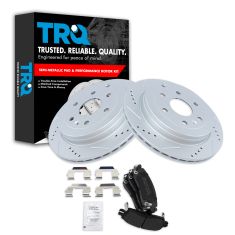1ABFS01575-Chevrolet GMC Buick Saturn Rear Semi-Metallic Brake Pad & Rotor Kit TRQ BKA11233

Replaces
2009 Chevrolet Traverse Rear Semi-Metallic Brake Pad & Rotor Kit TRQ BKA11233

Product Reviews
Loading reviews
5.00/ 5.0
4
4 reviews
Would highly recommend
April 25, 2017
Great product at a great price. Shipped right away.
Right parts right price
October 24, 2018
After being told all my brakes were bad on my 2011 Chevy Traverse when getting my tires rotated I figured I would look for an alterative to them doing the repairs. This package allowed me to save &180.00 in parts, as the package cost was what the repair center was going to charge just for the pads.
May 6, 2024
Fits good. Will buy again
Great brake set
June 6, 2024
All of the parts showed up on time. Everything in the box was correct from my vehicle and putting together was a breeze.
Customer Q&A
No questions have been asked about this item.
Chevrolet is a registered trademark of General Motors Company. 1A Auto is not affiliated with or sponsored by Chevrolet or General Motors Company.
See all trademarks.















